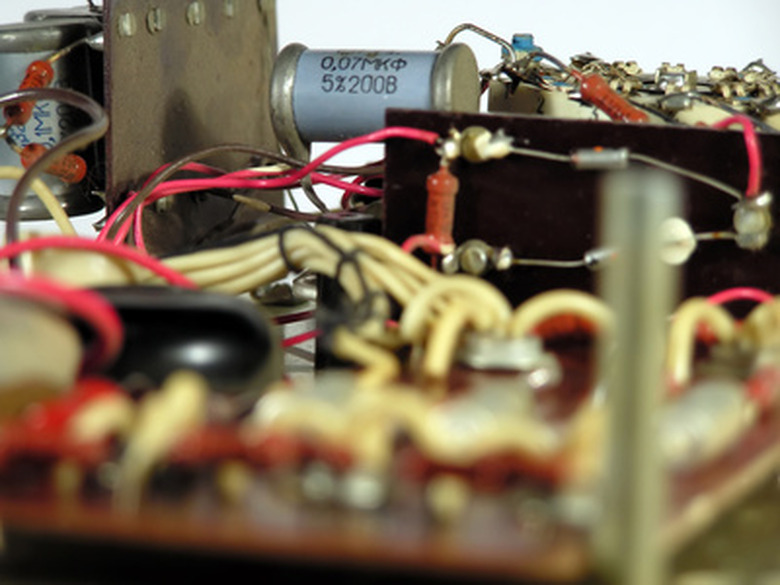Types Of Electrical Transformers
Transformers are used to change the voltage of an alternating circuit. They do this by connecting two circuits at a magnetic core (a magnetizable block of matter). The ratio of windings the two circuits make around the core determines how the voltage changes from the energy-input circuit to the energy-output circuit. Transformer use can be placed into two broad categories: power supply and signal matching.
Step-up Transformer
Step-up Transformer
The step-up transformer has a greater number of windings on the side it outputs energy. It therefore increases voltage while reducing current. An example is a cathode ray tube screen that requires thousands of volts, though it's running off a 110V wall socket. Likewise, a visiting traveler may need to run a European appliance (220V) off a U.S. outlet (110V).
Step-down Transformer
Step-down Transformer
A step-down transformer reverses the winding ratio. An example is a battery-operated device that can also be plugged into the wall. So a radio may run on 12V of batteries, but also be able to run on 110V via an adapter with a step-down transformer inside.
Isolation Transformer
Isolation Transformer
Isolation transformers don't necessarily step up or step down voltage, though they can. Isolation transformers can serve a number of purposes. They break a circuit into a primary and a secondary, a break that won't allow direct-current noise through. They prevent capacitance buildup between the primary and secondary, which causes high-frequency noise. They prevent unintentional ground connections between the primary and secondary. (Ground loop hum occurs in speakers, for example.) It can isolate the secondary circuit from the primary's current to prevent shock and inadvertent grounding from high voltage discharge.
Variable Auto-Transformer
Variable Auto-Transformer
A variable auto-transformer, or variac, can vary the voltage to the secondary (energy-output) circuit. The number of windings for the primary and secondary are varied with a dial. Because of the proximity of the primary and secondary windings, such transformers are generally used with low voltages, to prevent arcing.
Variacs are similar to potentiometers, but use inductance instead of resistance to vary how much voltage each circuit takes.
Current Transformer
Current Transformer
A current transformer allows use of an ammeter without having to insert it in series directly into a circuit. This is helpful for large power lines. The transformer's hoop-shaped core is fitted around the large line, which is effectively a single-winding primary circuit. Secondary winding is high, like in a normal transformer. The secondary circuit includes the ammeter. The primary's current can be calculated from the secondary's current.
Signal Matching
Signal Matching
Signal transformers convey a frequency from one circuit to another. Power loss is a major concern because communications electronics use low power levels already. Also, the signal needs to be kept accurate. Maximum power transfer is achieved when the impedances of the two circuits are matched, akin to resonance. So signal transformers are selected or tuned to achieve maximum impedance matching, based on the impedance of the other components in the two circuits.
References
Cite This Article
MLA
Dohrman, Paul. "Types Of Electrical Transformers" sciencing.com, https://www.sciencing.com/types-electrical-transformers-5505998/. 24 April 2017.
APA
Dohrman, Paul. (2017, April 24). Types Of Electrical Transformers. sciencing.com. Retrieved from https://www.sciencing.com/types-electrical-transformers-5505998/
Chicago
Dohrman, Paul. Types Of Electrical Transformers last modified March 24, 2022. https://www.sciencing.com/types-electrical-transformers-5505998/
